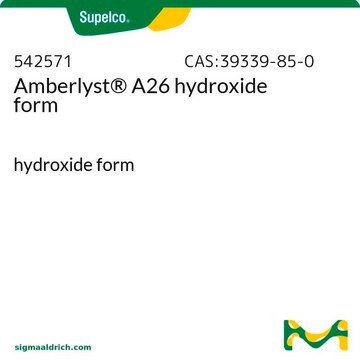442593
Tris(pentafluorophenyl)borane
95%
Synonym(s):
Perfluorotriphenylboron
About This Item
Recommended Products
Quality Level
Assay
95%
form
powder
greener alternative product characteristics
Catalysis
Learn more about the Principles of Green Chemistry.
sustainability
Greener Alternative Product
mp
126-131 °C (lit.)
greener alternative category
SMILES string
Fc1c(F)c(F)c(B(c2c(F)c(F)c(F)c(F)c2F)c3c(F)c(F)c(F)c(F)c3F)c(F)c1F
InChI
1S/C18BF15/c20-4-1(5(21)11(27)16(32)10(4)26)19(2-6(22)12(28)17(33)13(29)7(2)23)3-8(24)14(30)18(34)15(31)9(3)25
InChI key
OBAJXDYVZBHCGT-UHFFFAOYSA-N
Related Categories
General description
Application
Used with tri-tert-butylphosphine (570958) to study the heterolytic cleavage of dihydrogen at room temperature and one atmosphere pressure.
Features and Benefits
accessory
Signal Word
Warning
Hazard Statements
Precautionary Statements
Hazard Classifications
Eye Irrit. 2 - Skin Irrit. 2 - STOT SE 3
Target Organs
Respiratory system
Storage Class Code
11 - Combustible Solids
WGK
WGK 3
Flash Point(F)
Not applicable
Flash Point(C)
Not applicable
Personal Protective Equipment
Certificates of Analysis (COA)
Search for Certificates of Analysis (COA) by entering the products Lot/Batch Number. Lot and Batch Numbers can be found on a product’s label following the words ‘Lot’ or ‘Batch’.
Already Own This Product?
Find documentation for the products that you have recently purchased in the Document Library.
Customers Also Viewed
Articles
The properties of many devices are limited by the intrinsic properties of the materials that compose them.
Our team of scientists has experience in all areas of research including Life Science, Material Science, Chemical Synthesis, Chromatography, Analytical and many others.
Contact Technical Service![Sodium tetrakis[3,5-bis(trifluoromethyl)phenyl]borate](/deepweb/assets/sigmaaldrich/product/structures/251/439/7a621e74-bfd1-4a43-833c-09adfcc1e0b3/640/7a621e74-bfd1-4a43-833c-09adfcc1e0b3.png)









